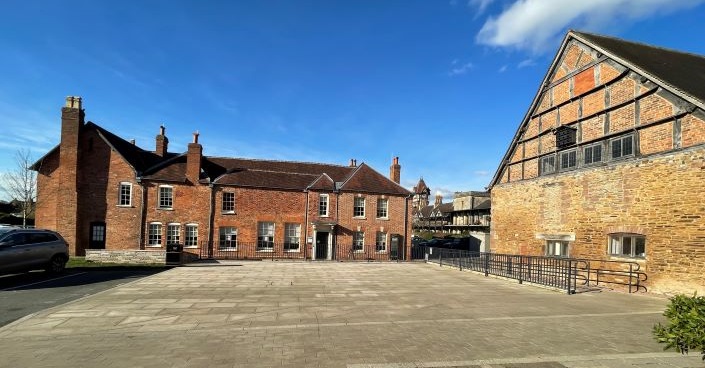History of the Master's House
The Master's House has been at the heart of Ledbury life for more than 500 years. Entry is free and all are welcome to explore this remarkable building during library opening hours.
St Katherine's Hospital

Originally a Tudor mansion for the Master of St Katherine's Hospital, it has been repeatedly adapted over the centuries since it was built in 1487-8. It has had many different occupants, all of whom have left their mark. Most recently, The Master's House has been restored and redeveloped as a modern library.
The house sat at the centre of the St Katherine's Hospital site which included the adjacent chapel and later almshouses.
The almsfolk recuperated in beds along the north and south walls of St Katherine's Hall. The Master and brethren who cared for them lived alongside the almsfolk and ate their meals with them. The east end of the building was St Katherine's Chapel - the hospital's spiritual heart.
Today it continues to be a place where physical, emotional and spiritual support can be found, supporting the wellbeing of people in Ledbury and the surrounding areas.
Founded by Bishop Foliot in 1231, St Katherine's Hospital was one of the grandest buildings in medieval Ledbury. Unusually for a hospital, it stood on the edge of the marketplace, amidst all the hustle and bustle of daily life. To everyone who passed by, it was a reminder of their Christian duty to be charitable.
Behind the hospital there were extensive grounds and gardens, all enclosed within hedges and stone walls. An impressive stone gateway survives on the edge of the High Street, a relic of the gatehouse that once secured the hospital site.
If you'd like to find out more, join a free guided tour with the Friends of The Master's House.
